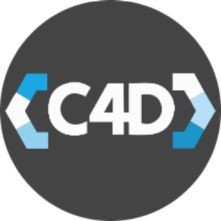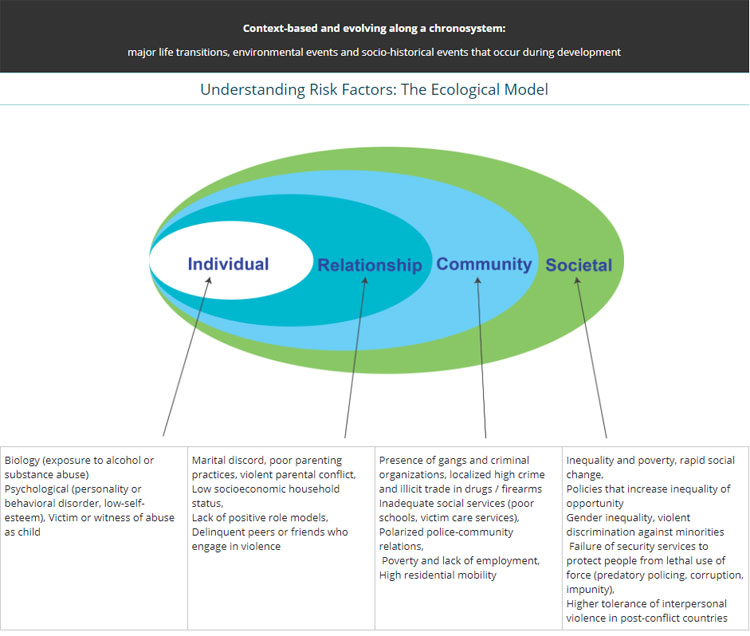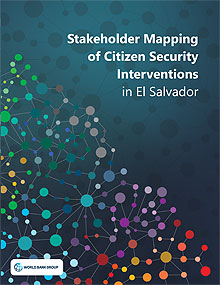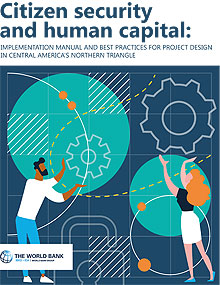

| Member | Action | Date | |
|---|---|---|---|
 md zia Uddin
md zia Uddin
|
Replied
to
Understanding Crime and Violence in Central America
Violence is effects of life
To understand crime and violence, we must first abandon some prior beliefs that were deeply embedded in development thinking for many years: the diagnosis that crime and violence are symptoms of a countries 'early development', caused by poverty or weak state capacity, and the belief that countries would naturally 'grow out of' these challenges as growth facilitated reduction in unemployment and inequality, are outdated and not supported by evidence. However, discarding this outdated logic does not leave us helpless; instead, it offers clear opportunities to act. Recent comprehensive attention to both diagnosis (identifying and understanding the data) and response (examining tools, approaches, and interventional models that have been brought to bear to determine the suggestive or probative evidence they offer) give us a good starting point for considering what World Bank Group diagnostics can contribute to a better more globally balanced understanding, and what WBG operational interventions can offer positive impact for people in client countries. "We will not solve the problem relying only on greater police action or greater incarceration, or through more education or employment. We must do all this and do it in a deliberate and effective way, based on reliable data and proven approaches, while continuously striving to fill existing knowledge and data gaps to improve policy design. While economic and social development do not necessarily lead to a reduction in crime and violence, high levels of crime and violence do take a toll on development." from the Forward to Stop the Violence in Latin America: A Look at Prevention from Cradle to Grave, Laura Chioda, World Bank Group, 2017.
|
Dec 06 2022, 1:06 AM |
|
 md zia Uddin
md zia Uddin
|
Replied
to
Understanding Crime and Violence in Central America
Violence stop system is good community
To understand crime and violence, we must first abandon some prior beliefs that were deeply embedded in development thinking for many years: the diagnosis that crime and violence are symptoms of a countries 'early development', caused by poverty or weak state capacity, and the belief that countries would naturally 'grow out of' these challenges as growth facilitated reduction in unemployment and inequality, are outdated and not supported by evidence. However, discarding this outdated logic does not leave us helpless; instead, it offers clear opportunities to act. Recent comprehensive attention to both diagnosis (identifying and understanding the data) and response (examining tools, approaches, and interventional models that have been brought to bear to determine the suggestive or probative evidence they offer) give us a good starting point for considering what World Bank Group diagnostics can contribute to a better more globally balanced understanding, and what WBG operational interventions can offer positive impact for people in client countries. "We will not solve the problem relying only on greater police action or greater incarceration, or through more education or employment. We must do all this and do it in a deliberate and effective way, based on reliable data and proven approaches, while continuously striving to fill existing knowledge and data gaps to improve policy design. While economic and social development do not necessarily lead to a reduction in crime and violence, high levels of crime and violence do take a toll on development." from the Forward to Stop the Violence in Latin America: A Look at Prevention from Cradle to Grave, Laura Chioda, World Bank Group, 2017.
|
Dec 06 2022, 12:44 AM |
|
 md zia Uddin
md zia Uddin
|
Replied
to
Understanding Crime and Violence in Central America
Stop violence, save life
To understand crime and violence, we must first abandon some prior beliefs that were deeply embedded in development thinking for many years: the diagnosis that crime and violence are symptoms of a countries 'early development', caused by poverty or weak state capacity, and the belief that countries would naturally 'grow out of' these challenges as growth facilitated reduction in unemployment and inequality, are outdated and not supported by evidence. However, discarding this outdated logic does not leave us helpless; instead, it offers clear opportunities to act. Recent comprehensive attention to both diagnosis (identifying and understanding the data) and response (examining tools, approaches, and interventional models that have been brought to bear to determine the suggestive or probative evidence they offer) give us a good starting point for considering what World Bank Group diagnostics can contribute to a better more globally balanced understanding, and what WBG operational interventions can offer positive impact for people in client countries. "We will not solve the problem relying only on greater police action or greater incarceration, or through more education or employment. We must do all this and do it in a deliberate and effective way, based on reliable data and proven approaches, while continuously striving to fill existing knowledge and data gaps to improve policy design. While economic and social development do not necessarily lead to a reduction in crime and violence, high levels of crime and violence do take a toll on development." from the Forward to Stop the Violence in Latin America: A Look at Prevention from Cradle to Grave, Laura Chioda, World Bank Group, 2017.
|
Dec 06 2022, 12:40 AM |
|
 md zia Uddin
md zia Uddin
|
Replied
to
Understanding Crime and Violence in Central America
Stop violence, save life
To understand crime and violence, we must first abandon some prior beliefs that were deeply embedded in development thinking for many years: the diagnosis that crime and violence are symptoms of a countries 'early development', caused by poverty or weak state capacity, and the belief that countries would naturally 'grow out of' these challenges as growth facilitated reduction in unemployment and inequality, are outdated and not supported by evidence. However, discarding this outdated logic does not leave us helpless; instead, it offers clear opportunities to act. Recent comprehensive attention to both diagnosis (identifying and understanding the data) and response (examining tools, approaches, and interventional models that have been brought to bear to determine the suggestive or probative evidence they offer) give us a good starting point for considering what World Bank Group diagnostics can contribute to a better more globally balanced understanding, and what WBG operational interventions can offer positive impact for people in client countries. "We will not solve the problem relying only on greater police action or greater incarceration, or through more education or employment. We must do all this and do it in a deliberate and effective way, based on reliable data and proven approaches, while continuously striving to fill existing knowledge and data gaps to improve policy design. While economic and social development do not necessarily lead to a reduction in crime and violence, high levels of crime and violence do take a toll on development." from the Forward to Stop the Violence in Latin America: A Look at Prevention from Cradle to Grave, Laura Chioda, World Bank Group, 2017.
|
Dec 06 2022, 12:40 AM |
|
 md zia Uddin
md zia Uddin
|
Replied
to
Understanding Crime and Violence in Central America
Violence is very bad for world. Our need stop violence.
thanks.zia from Bangladesh To understand crime and violence, we must first abandon some prior beliefs that were deeply embedded in development thinking for many years: the diagnosis that crime and violence are symptoms of a countries 'early development', caused by poverty or weak state capacity, and the belief that countries would naturally 'grow out of' these challenges as growth facilitated reduction in unemployment and inequality, are outdated and not supported by evidence. However, discarding this outdated logic does not leave us helpless; instead, it offers clear opportunities to act. Recent comprehensive attention to both diagnosis (identifying and understanding the data) and response (examining tools, approaches, and interventional models that have been brought to bear to determine the suggestive or probative evidence they offer) give us a good starting point for considering what World Bank Group diagnostics can contribute to a better more globally balanced understanding, and what WBG operational interventions can offer positive impact for people in client countries. "We will not solve the problem relying only on greater police action or greater incarceration, or through more education or employment. We must do all this and do it in a deliberate and effective way, based on reliable data and proven approaches, while continuously striving to fill existing knowledge and data gaps to improve policy design. While economic and social development do not necessarily lead to a reduction in crime and violence, high levels of crime and violence do take a toll on development." from the Forward to Stop the Violence in Latin America: A Look at Prevention from Cradle to Grave, Laura Chioda, World Bank Group, 2017.
|
Dec 06 2022, 12:37 AM |
|
|
|
Posted Stakeholder mapping of citizen security interventions in El Salvador on Documents
The objective of this paper is a twofold exercise: first, to map stakeholders in El Salvador that engage on citizen security and violence prevention programs and, second, explore potential gaps of opportunity where World Bank teams can engage on issues related to citizen security with an updated approach. While there have been past efforts to track and monitor stakeholders and their interventions, it is important to have up-to-date understanding of what is being done to avoid duplication of efforts and encourage collaboration among the many different actors. This brief provides a general baseline overview of current donor activities (including loans, grants, donations and others) from international cooperation agencies and multilateral organizations in response to the Government of El Salvador (GOES) needs, strategies, and priorities in the crime and violence sector to build lasting peace in the country. It includes a partial inventory of implemented projects and technical capacity provided, as well as examples of novel initiatives and overall trends in citizen security. |
Jun 29 2021, 10:15 AM |
|
|
|
Updated Stakeholder mapping of citizen security interventions in El Salvador on Documents
This brief provides a general baseline overview of current donor activities (including loans, grants, donations and others) from international cooperation agencies and multilateral organizations in response to the Government of El Salvador (GOES) needs, strategies, and priorities in the crime and violence sector to build lasting peace in the country. It includes a partial inventory of implemented projects and technical capacity provided, as well as examples of novel initiatives and overall trends in citizen security. |
Jun 29 2021, 10:15 AM |
|
|
|
Posted Citizen security and human capital: Implementation manual and best practices for project design in Central America’s Northern Triangle on Documents
This manual examines how human capital projects (health and education) financed by the World Bank can integrate activities that address citizen security. While the manual provides important information on context of crime and violence in Northern Triangle countries, its principal contribution is as a guide for task teams. The manual, in combination with the Citizen Security Toolkit, is an important resource for teams to think deeply about what kinds of activities can be included in their projects. The manual lays out the basic approach to citizen security that the World Bank has adopted, but also details programs and interventions that work to reduce violence in the education and health sectors and can be incorporated into project design. |
Jun 29 2021, 10:14 AM |
|
|
|
Updated Citizen security and human capital: Implementation manual and best practices for project design in Central America’s Northern Triangle on Documents
|
Jun 29 2021, 10:14 AM |
|
|
|
attach
in
World Bank
WBG_Working_Paper_Stakeholder_Mapping_of_Citizen_Security_Interventions_in_El_Salvador.pdf
World Bank
Show more
|
Jun 29 2021, 10:12 AM |


